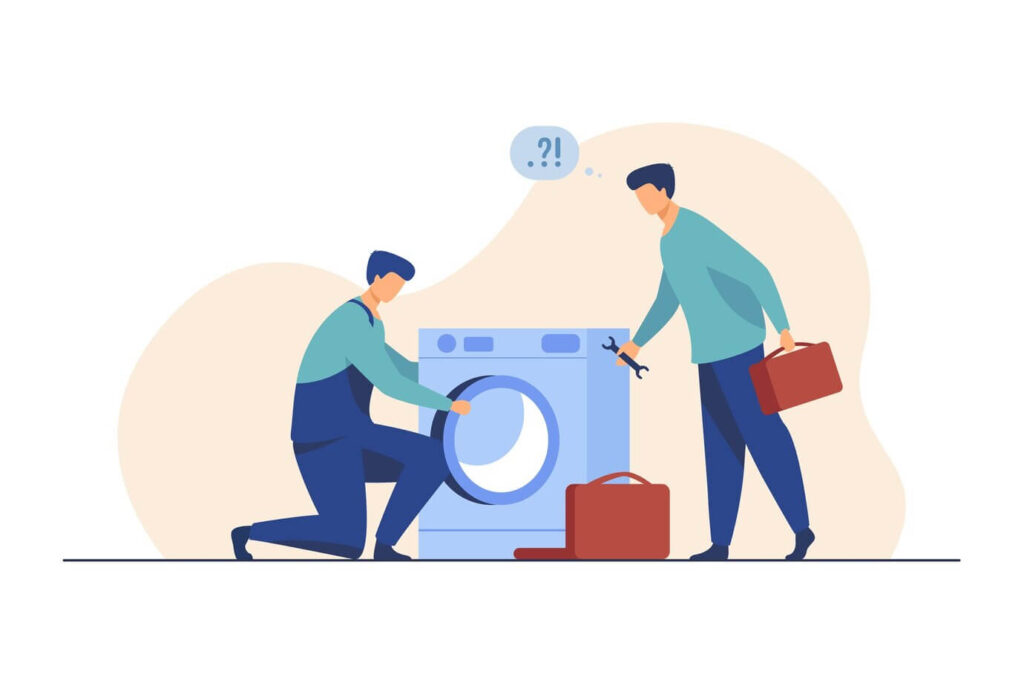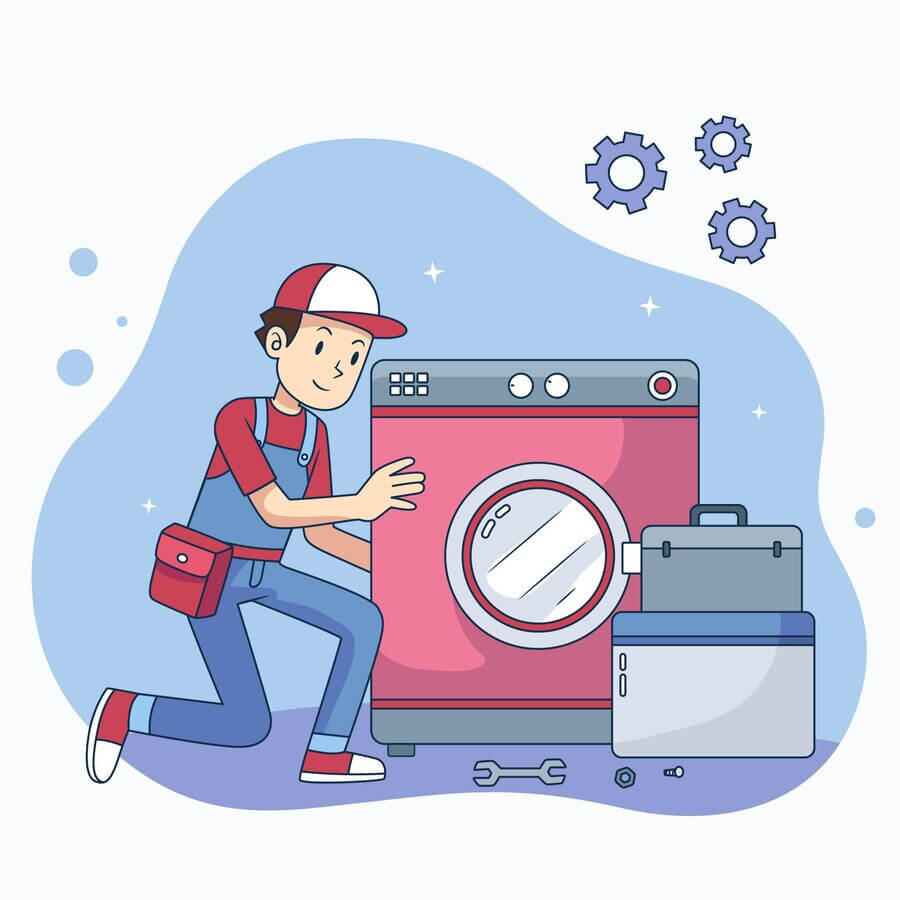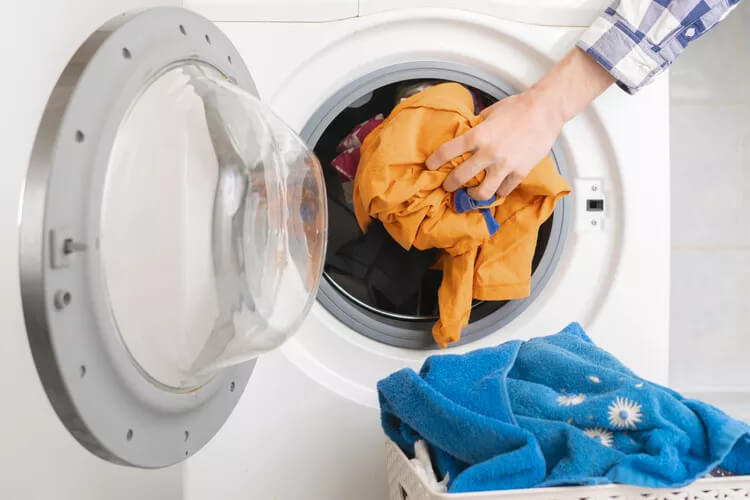
So, your dryer is acting up, and you find yourself with a load of wet laundry and a perplexed expression. Fear not, fellow Brooklynites and laundry enthusiasts, for we’re diving into the world of dryer repair. In the hustle and bustle of our daily lives, a functional dryer is the unsung hero in the laundry room, and when it starts acting like a drama queen, it’s time to roll up our sleeves and get to the bottom of it.
The Symphony of Daily Life
Brooklyn, New York, a city that never sleeps, and neither does the laundry. We’ve all been there – eagerly anticipating warm, fluffy towels or that favorite pair of jeans only to be met with a cold, damp letdown. It’s like a bad opening act before the main event. But fear not, my friends, for understanding and tackling common dryer issues can turn you into a laundry maestro.
Navigating the Maze of Dryer Dilemmas
So, what’s causing the ruckus in your laundry routine? Is it a stubborn refusal to heat up, a noisy performance that rivals the subway, or a drum that’s taking an unscheduled break from spinning? Identifying the problem is half the battle won. In this guide, we’re not just going to slap a band-aid on the issue; we’re going to dig deep into the inner workings of your dryer and emerge victorious.
Purpose of Our Expedition
Why are we embarking on this quest? Well, besides rescuing your laundry, the aim here is to empower you, yes, you, to become the hero of your laundry saga. From the intricate dance of heating elements to the rhythmic hum of drum support rollers, we’ll unravel the mysteries that plague your trusty appliance.
In the following sections, we’ll navigate through the different types of dryers, dissect their components, and venture into the realm of common dryer problems. But before we embark on this adventure, remember – a dryer on the fritz doesn’t have to mean a laundry apocalypse. It’s time to reclaim your laundry day and show that misbehaving dryer who’s boss. So, tighten your imaginary tool belt, because we’re about to embark on a journey through the world of dryer repair in the heart of Brooklyn, New York.
Understanding Your Dryer
Types of Dryers
Before we embark on our troubleshooting mission, let’s decipher the dryer code. Dryers come in different flavors – ventless, vented, gas, and electric. Each type has its own set of quirks, and knowing what you’re dealing with is the first step in our laundry rescue operation.
| Dryer Type | Characteristics |
| Ventless | No need for external venting; uses condensation |
| Vented | Requires external venting to expel moist air |
| Gas | Powered by natural gas, faster drying times |
| Electric | Runs on electricity, simpler installation |
Components and Their Functions
Now that we’ve identified the species, let’s dissect the beast. Your dryer is more than just a metal box that spins clothes in hot air. It’s a symphony of components working together. Here’s a quick rundown:
- Drum and Drum Support Rollers:
- Role: Holds and rotates the clothes.
- Issue: Noisy operation may indicate worn-out rollers.
- Heating Element or Gas Burner:
- Role: Generates heat to dry clothes.
- Issue: If it’s cold-hearted, your clothes will be too.
- Thermostat and Thermal Fuse:
- Role: Regulates temperature; prevents overheating.
- Issue: A faulty thermostat can lead to temperature tantrums.
- Belts and Pulleys:
- Role: Facilitates drum rotation.
- Issue: Worn-out belts can bring the drumming to a halt.
- Venting System:
- Role: Expels moist air during the drying process.
- Issue: Clogged vents can be the bottleneck in your laundry escape plan.
Understanding these components is like knowing the players in a band – each with its own part to play for a harmonious performance. In the next section, we’ll unravel the mysteries behind common dryer issues, so you can be the conductor of this appliance orchestra.
Common Dryer Issues
Now that we’ve had a crash course in Dryer 101, let’s delve into the nitty-gritty of common dryer issues that can turn your laundry routine into a melodrama. If your dryer is not belting out a satisfying performance, it’s time to troubleshoot.
Not Heating
Is your dryer being a cold-hearted companion?
- Troubleshooting the Heating Element: Check: Is it glowing or just playing it cool? A defective heating element might need a replacement.
- Checking the Thermostat and Thermal Fuse: Ask: Are they keeping their cool? A malfunctioning thermostat or blown thermal fuse can leave you in the cold.
- Examining Gas Burner Components (for Gas Dryers): Wonder: Is the gas burner playing hide-and-seek? Gas dryers need a spark – literally. Ensure the igniter, flame sensor, and coils are in sync.
Noisy Operation
Is your dryer attempting a percussion solo?
- Inspecting Drum Support Rollers: Listen: Is there a rhythmic beat or a screechy symphony? Worn-out drum support rollers might need a backstage pass to retirement.
- Checking for Damaged Belts and Pulleys: Feel: Is the drum struggling to spin? Tangled belts or faulty pulleys could be the culprits.
- Lubricating or Replacing Bearings: Detect: Is there friction in the air? Bearings in the drum might be in need of some love – or a replacement.
Drum Not Spinning
Is your dryer taking an unexpected siesta?
- Assessing the Drive Belt: Ask: Is the belt still in the groove? A loose or broken drive belt can put the drum on a strike.
- Inspecting the Idler Pulley: Check: Is the pulley idling too much? A faulty idler pulley can bring the spinning to a grinding halt.
- Examining the Motor: Listen: Is the motor humming or snoozing? A malfunctioning motor might need a wake-up call or a replacement.
Overheating
Is your dryer having hot flashes?
- Cleaning Lint Filter and Vent: Ask: Are they suffocating in lint? Clogged filters and vents can lead to overheating – clean them regularly.
- Verifying Proper Thermostat Function: Check: Is the thermostat on a wild spree? Ensure it’s not letting the heat party get out of control.
- Inspecting the Heating Element: Ask: Is the heating element playing with fire? A malfunctioning element can turn your laundry room into a sauna.
Clothes Taking Too Long to Dry
Is your dryer making you play the waiting game?
- Clearing Lint Buildup in the Vent: Check: Is the vent clogged? A clear vent means a speedy exit for moist air.
- Checking for Airflow Restrictions: Feel: Are there obstacles in the air’s path? Ensure the airflow is as smooth as a jazz melody.
- Verifying Proper Thermostat Function: Ask: Is the thermostat calling the shots accurately? An offbeat thermostat can prolong the drying symphony.
In the next section, we’ll prepare our toolkit and unravel the art of diagnosing and fixing these dryer predicaments. So, tighten those tool belts; we’re heading into the heart of dryer triage.
Tools and Equipment Needed
Now that we’ve identified the potential culprits behind your dryer’s dramatic performance, it’s time to assemble your superhero toolkit. Every laundry savior needs the right gear, so let’s break down what you’ll need to get your dryer back in action.
Basic Toolkit
- Screwdrivers: Variety: Phillips and flathead – like the Batman and Robin of screw-tightening.
- Pliers: Utility: For a firm grip on stubborn components.
- Wrench: Adjustable: The multitool for tightening loose nuts and bolts.
Multimeter for Electrical Testing
- Voltage Setting: Purpose: To check if electrical components are conducting themselves properly.
- Resistance Setting: Function: Identifying faulty elements by measuring their resistance.
- Continuity Setting: Usage: Ensuring the flow of electricity is a smooth, uninterrupted melody.
Replacement Parts
- Heating Element: For: Bringing the warmth back to your dryer.
- Thermostat and Thermal Fuse: To: Keep the temperature drama in check.
- Belts and Pulleys: For: Resuming the rhythmic rotation of the drum.
- Lubricants and Cleaning Supplies: To: Ease the friction and keep things squeaky clean.
Your Diagnostic Cap
- Patience: Essential: Diagnosing issues may take time – channel your inner Zen master.
- Observation Skills: For: Noticing the subtle signs of wear and tear.
- Common Sense: To: Navigate through the maze of dryer intricacies.
Safety Gear
- Gloves and Safety Glasses: Protection: Shielding your hands and eyes from potential hazards.
- Closed-toe Shoes: For: Tiptoeing around potential entanglements.
Replacement Parts Checklist
| Component | Quantity |
| Heating Element | 1 |
| Thermostat and Thermal Fuse | 1 set |
| Belts and Pulleys | 1 set |
Now that your toolkit is ready, we’re gearing up for the diagnostic phase. In the following section, we’ll guide you through a step-by-step repair process, ensuring that your dryer emerges from the shadows and takes center stage once again. So, tighten those laces and let’s dive into the heart of dryer restoration.
Step-by-Step Repair Guide

Safety Precautions
Before we plunge into the intricacies of dryer surgery, let’s make safety our top priority. Remember, a cautious approach ensures a smoother repair process.
- Unplugging the Dryer: Why: To avoid any unplanned electric shocks. Safety first, always.
- Turning Off Gas Supply (for Gas Dryers): Why: Preventing potential gas leaks during the operation.
- Wearing Protective Gear: Essential: Gloves and safety glasses for shielding against unexpected surprises.
Diagnosis – Identifying the Gremlins
- Identifying the Specific Issue: Question: What’s the dryer’s main complaint? Lack of heat, strange noises, or a spinning protest? Pinpoint the problem.
- Using the Multimeter for Electrical Testing: How: Set the multimeter to voltage, resistance, and continuity modes. Test components like the heating element and thermostat for proper functioning.
Disassembly – Peek Behind the Curtain
- Removing the Dryer Panels:
- Tools: Screwdrivers, pliers.
- How: Unscrew the panels carefully, exposing the inner workings.
- Accessing Key Components: Navigate: Locate the heating element, thermostat, thermal fuse, belts, pulleys, and motor.
Repair and Replacement – Operation Resurrection
- Replacing Faulty Heating Elements: Procedure: Disconnect power, remove the old element, and install the new one. Ensure proper connections.
- Installing a New Thermostat or Thermal Fuse: Steps: Disconnect power, remove the old components, and install the replacements. Be mindful of proper placement.
- Changing Worn-out Belts and Pulleys: Procedure: Release tension, remove old belts, and replace with new ones. Lubricate or replace pulleys as needed.
Reassembly – Bringing It All Back Together
- Putting the Dryer Back Together: Sequence: Reverse the disassembly steps, ensuring each component finds its rightful place.
- Checking for Proper Alignment: Verify: Ensure that belts, pulleys, and other components align correctly to avoid future hiccups.
Preventive Maintenance Tips – A Stitch in Time
- Regular Lint Filter Cleaning:
- Frequency: After each use.
- Why: Prevents lint buildup, ensuring optimal airflow.
- Annual Vent Inspection and Cleaning:
- Timing: Once a year.
- Why: Clears any obstructions, reducing the risk of overheating.
- Lubricating Moving Parts:
- Interval: Every six months.
- Why: Reduces friction, extending the life of belts and pulleys.
- Checking and Tightening Electrical Connections:
- Schedule: Annually.
- Why: Ensures secure connections, minimizing electrical issues.
When to Seek Professional Help – Calling in Reinforcements
- Complex Issues Requiring Specialized Knowledge:
- Example: Electronic control board malfunctions.
- Action: Call a professional technician.
- Safety Concerns for Gas Dryers:
- Example: Suspected gas leaks.
- Action: Evacuate the area, contact a professional immediately.
- Manufacturer’s Warranty Considerations:
- Scenario: Still under warranty.
- Action: Consult the manufacturer or an authorized service center.
In the next section, we’ll wrap up our guide with a recap of common dryer issues and solutions. Get ready to bask in the glory of a repaired and rejuvenated dryer, ready to tackle laundry with renewed vigor.
Empowered for Future Laundry Adventures
As you stand victorious over your resurrected dryer, it’s crucial to embrace the rhythm of preventive maintenance. Regular lint filter cleaning, annual vent inspections, and a touch of lubrication will keep your appliance humming along, leaving you to enjoy laundry day without the unnecessary drama.
Remember, while our guide equips you to handle common dryer issues, there are times when it’s wise to call in the cavalry. Complex electronic malfunctions or suspected gas leaks require the expertise of a professional technician. Additionally, if your dryer is still under the manufacturer’s warranty, consulting them or an authorized service center ensures you don’t inadvertently void any coverage.
With your diagnostic cap firmly in place and your toolkit at the ready, you’re now the maestro of your laundry symphony. Whether it’s a noisy drum, a chilly demeanor, or a rebellious spin cycle, you’re armed and prepared to face any dryer dilemma that comes your way.
So, tighten those belts (both yours and the dryer’s), and let the freshly repaired appliance take a bow. Your laundry room may just become the stage for a standing ovation – not for the dryer’s performance, but for your newfound expertise in the art of dryer repair. Happy drying!
Frequently Asked Questions (FAQ)
Q1: My dryer is not heating up. What could be the problem?
A: Several factors could lead to a cold-hearted dryer. Start by checking the heating element for signs of damage or malfunction. Verify the thermostat and thermal fuse for proper functioning. For gas dryers, ensure the gas burner components (igniter, flame sensor, coils) are in working order.
Q2: How do I address the annoying noise coming from my dryer?
A: Noisy dryers often indicate issues with drum support rollers, belts, or pulleys. Inspect the drum support rollers for wear and tear. Check for damaged belts and pulleys and lubricate or replace them as needed. Bearings in the drum may also require attention.
Q3: What should I do if the drum is not spinning?
A: A non-spinning drum may result from a loose or broken drive belt, a faulty idler pulley, or a malfunctioning motor. Check the drive belt for tension and integrity, inspect the idler pulley, and listen for motor humming. Replacement or adjustments may be necessary.
Q4: My dryer is overheating. How can I resolve this issue?
A: Overheating dryers often point to lint buildup in filters and vents. Regularly clean the lint filter and ensure proper vent airflow. Verify the thermostat’s accurate functioning and inspect the heating element for any malfunctions.
Q5: What can I do if my clothes are taking too long to dry?
A: Slow-drying clothes may be a result of a clogged vent or restricted airflow. Clear lint buildup from the vent, ensure unobstructed airflow, and check the thermostat for accuracy.
Q6: What tools do I need for basic dryer repairs?
A: A basic toolkit should include screwdrivers, pliers, and an adjustable wrench. For electrical testing, a multimeter is essential. Additionally, you may need replacement parts such as a heating element, thermostat, and belts.
Q7: How often should I perform preventive maintenance on my dryer?
A: Regular maintenance is key. Clean the lint filter after each use, inspect and clear vents annually, lubricate moving parts every six months, and check and tighten electrical connections annually.
Q8: When should I seek professional help for dryer repairs?
A: If you encounter complex issues beyond your expertise, such as electronic control board malfunctions or suspected gas leaks (for gas dryers), it’s advisable to call a professional technician. Additionally, consider warranty considerations and consult the manufacturer or an authorized service center when needed.



